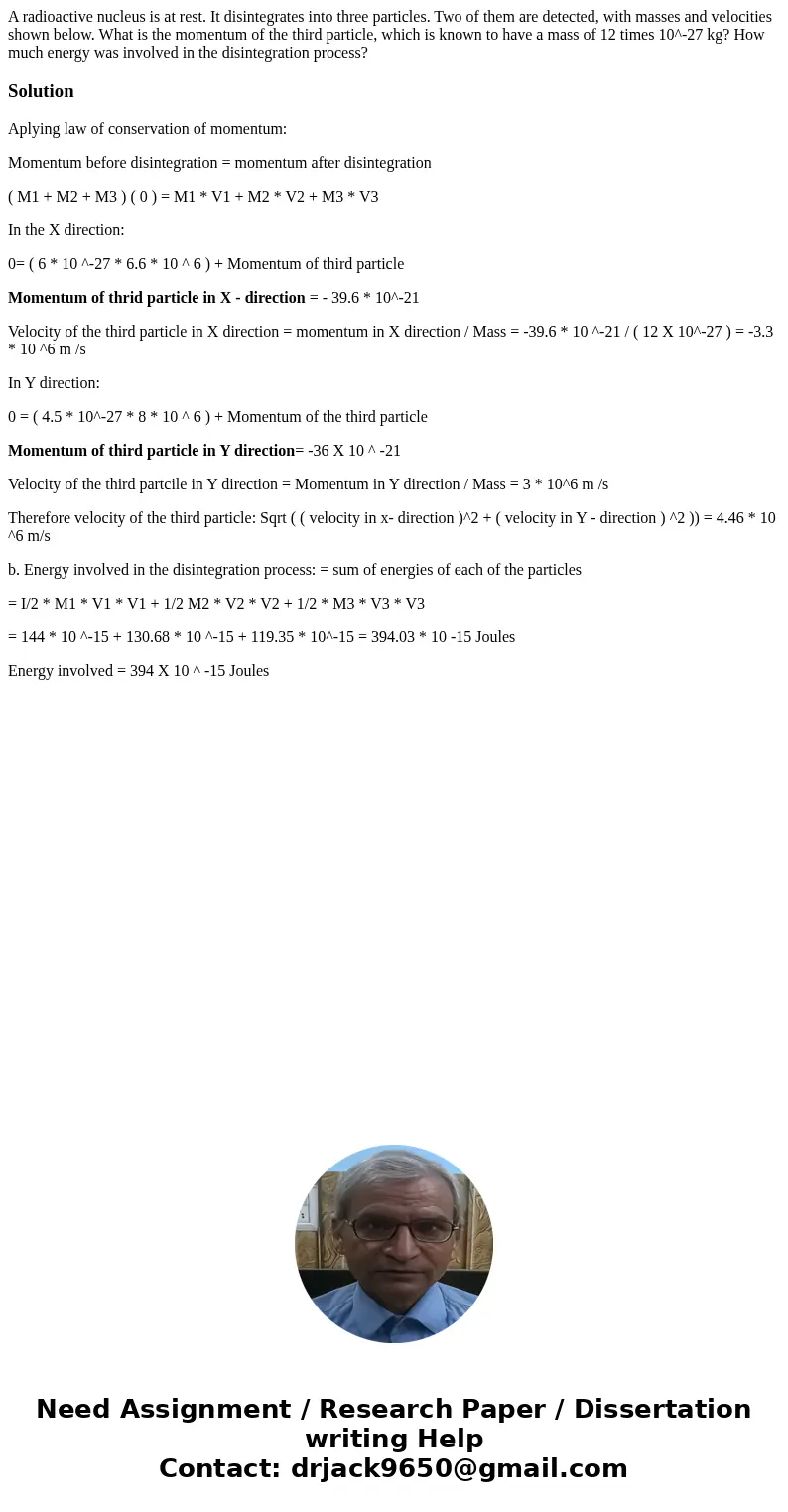A radioactive nucleus is at rest It disintegrates into three
Solution
Aplying law of conservation of momentum:
Momentum before disintegration = momentum after disintegration
( M1 + M2 + M3 ) ( 0 ) = M1 * V1 + M2 * V2 + M3 * V3
In the X direction:
0= ( 6 * 10 ^-27 * 6.6 * 10 ^ 6 ) + Momentum of third particle
Momentum of thrid particle in X - direction = - 39.6 * 10^-21
Velocity of the third particle in X direction = momentum in X direction / Mass = -39.6 * 10 ^-21 / ( 12 X 10^-27 ) = -3.3 * 10 ^6 m /s
In Y direction:
0 = ( 4.5 * 10^-27 * 8 * 10 ^ 6 ) + Momentum of the third particle
Momentum of third particle in Y direction= -36 X 10 ^ -21
Velocity of the third partcile in Y direction = Momentum in Y direction / Mass = 3 * 10^6 m /s
Therefore velocity of the third particle: Sqrt ( ( velocity in x- direction )^2 + ( velocity in Y - direction ) ^2 )) = 4.46 * 10 ^6 m/s
b. Energy involved in the disintegration process: = sum of energies of each of the particles
= I/2 * M1 * V1 * V1 + 1/2 M2 * V2 * V2 + 1/2 * M3 * V3 * V3
= 144 * 10 ^-15 + 130.68 * 10 ^-15 + 119.35 * 10^-15 = 394.03 * 10 -15 Joules
Energy involved = 394 X 10 ^ -15 Joules

 Homework Sourse
Homework Sourse